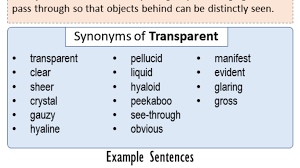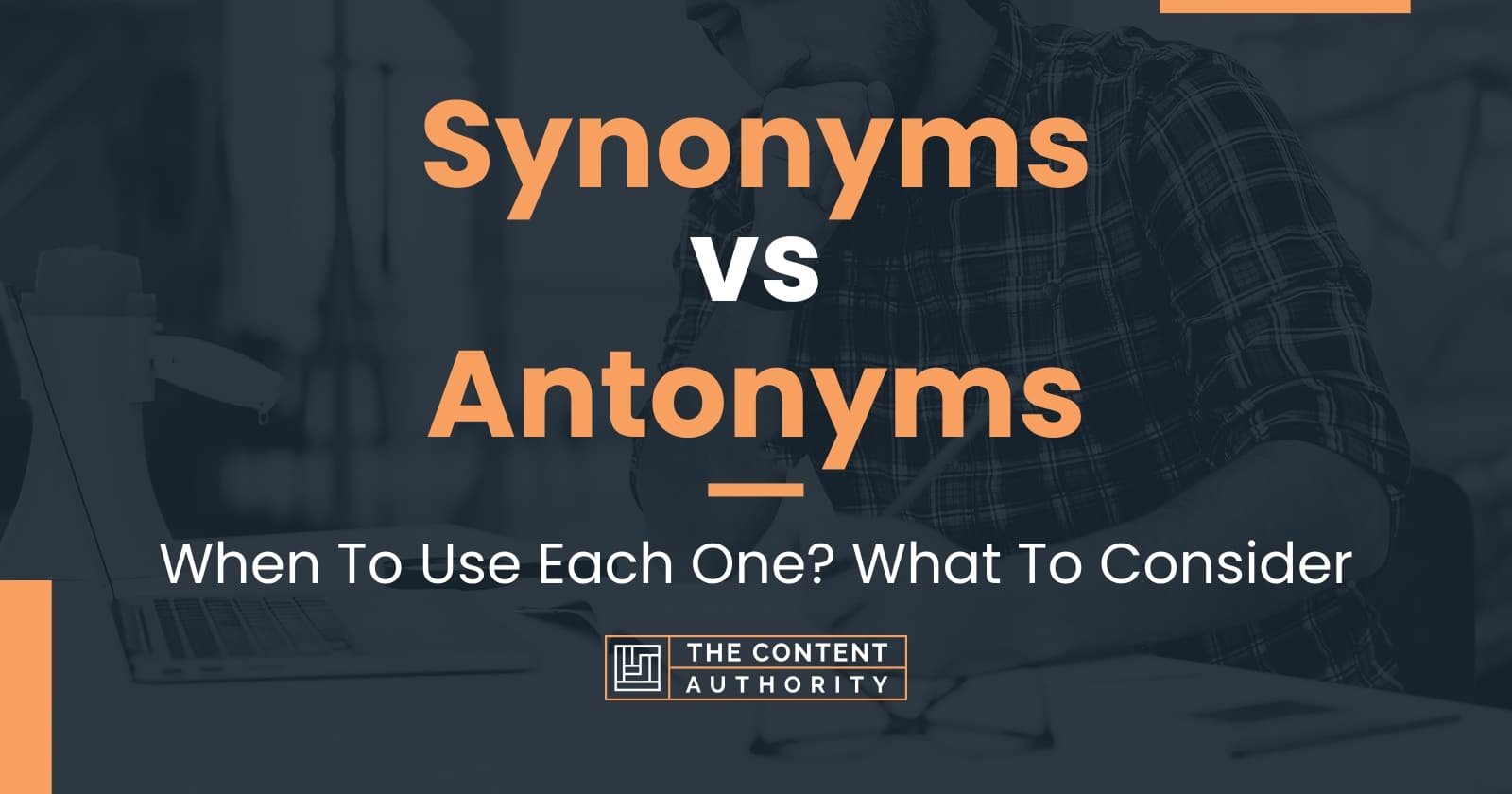Are you tired of using the same old words repeatedly in your writing? Do you want to add some variety and nuance to your vocabulary? If so, then transparent synonyms might be just what you need! These are words that have similar meanings but differ in subtle ways. In this blog post, we’ll explore the world of transparent synonyms and understand how they can elevate your writing to new heights. So let’s dive in and discover how these often-overlooked words can make a big difference!
What are transparent synonyms?
Transparent synonyms are words that have similar meanings, but also possess subtle differences. These words can be used interchangeably in certain contexts without changing the meaning of a sentence, but they can also add variety and depth to your writing.
For example, consider two transparent synonyms: “”happy”” and “”joyful.”” Both convey positive emotions, but “”happy”” is a more general term while “”joyful”” implies a deeper sense of happiness or elation. By choosing one over the other based on context, you can give your writing nuance and richness.
Another example is the pair of words “”big”” and “”large.”” Though these terms seem interchangeable at first glance, there are nuances in their usage. For instance, when describing an object’s physical size, it’s more appropriate to use “large” instead of “big.”
When using transparent synonyms effectively in your writing, it’s important to consider both their similarities and differences. Paying attention to subtle shifts in meaning will help you choose the right word for each situation.
Incorporating transparent synonyms into your writing allows for greater creativity with language and helps avoid repetition – making your content stand out!
How do transparent synonyms differ?

Transparent synonyms may seem identical in meaning, but there are subtle differences that set them apart. One way transparent synonyms differ is through their connotations. While two words may have the same definition, one may carry a positive connotation while the other carries a negative one.
Another difference between transparent synonyms is their level of formality or informality. Some words are more commonly used in casual conversation while others are more suitable for professional communication.
Context also plays a role in how transparent synonyms differ. One word might be appropriate to use in a certain situation while another would not be as effective. For example, “”tiny”” and “”minuscule”” both mean small, but “”minuscule”” might be better suited when describing something very small and precise such as text on an engraved piece of jewelry.
The nuances of each synonym can impact the overall tone and message of your writing or speech. It’s important to carefully consider which word you choose to ensure that it accurately re
flects your intended meaning and leaves the desired impression on your audience.
When should you use transparent synonyms?
When it comes to using transparent synonyms, the key is to understand when they can be beneficial in communication. Transparent synonyms can help you avoid repetition and add variety to your writing or speech.
One instance where transparent synonyms are particularly useful is when you want to emphasize a particular point. Using different words with similar meanings can make your message more impactful and memorable for your audience.
Another situation where using transparent synonyms might be advantageous is if you want to convey a specific tone or mood. Certain words carry connotations that others don’t, so choosing the right synonym can help set the tone for what you’re trying to communicate.
It’s important to note, however, that not all situations warrant the use of transparent synonyms. Overuse of such language can come across as forced or pretentious, which may detract from your overall message.
In general, it’s best to use transparent synonyms sparingly and only when they serve a clear purpose in enhancing your communication efforts.
By understanding when and how to incorporate these types of words into your writing or speech, you’ll be better equipped to effectively convey your intended meaning and engage with your audience on a deeper level.
Conclusion
Transparent synonyms are a valuable tool for any writer or speaker looking to add nuance and depth to their language. By understanding the subtle differences between words that may appear similar on the surface, we can choose more precise and effective language in our communication. However, it’s important to remember that context is key when deciding whether or not to use a transparent synonym. We should always consider our audience and purpose before selecting a word, as well as be mindful of potential cultural or regional variations in meaning. By taking the time to explore and appreciate these nuances of language, we can become more skilled communicators and better able to express ourselves with clarity and impact.




